1.- Comprehensive overview of the project
A state-of-the-art was developed to provide a comprehensive project overview.
D1.2 Comprehensive Overview of the Project
2.- Deploying emerging renewable energies
2.1.- Geothermal energy deployment
The characteristics of geothermal conditions worldwide and in Europe are discussed. The analyses covered the geothermal energy market and identify technologies for geothermal energy recovery, such as direct dry steam plants, flash steam plants, binary cycle power plants, and hydrothermal spallation drilling technology. The report also discusses the use of geothermal energy in mining, including closed-loop and open-loop systems.
Considerations relating to the energy system for geothermal energy deployment in mining areas and the value chain were prepared. These highlight the potential benefits of using geothermal energy, such as reduced costs and emissions, increased energy security, and job creation. The report also discussed the challenges and barriers to geothermal energy deployment, including geological and technical risks, regulatory frameworks, financing, and public acceptance.
This task concludes with a discussion of best practices for geothermal energy deployment in mining areas. It highlights the importance of collaboration among stakeholders, including government, industry, and local communities, and the need for innovative financing mechanisms, such as public-private partnerships, to overcome the barriers to geothermal energy deployment.
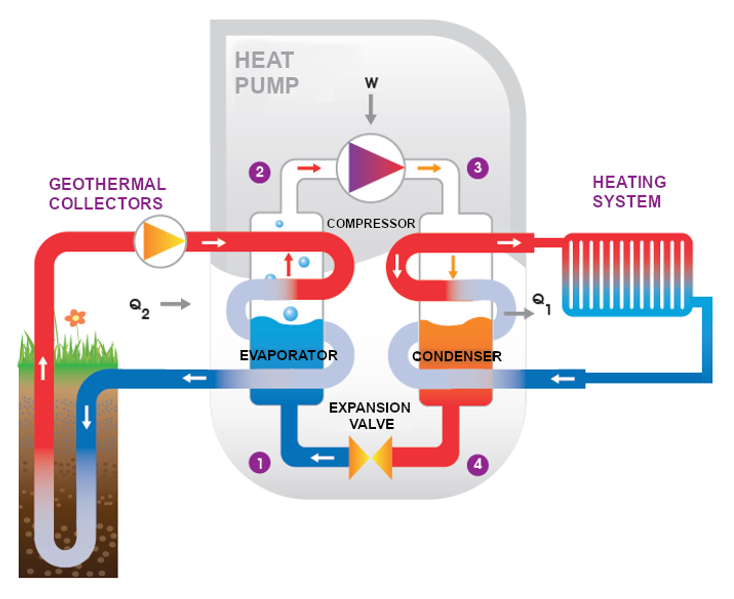
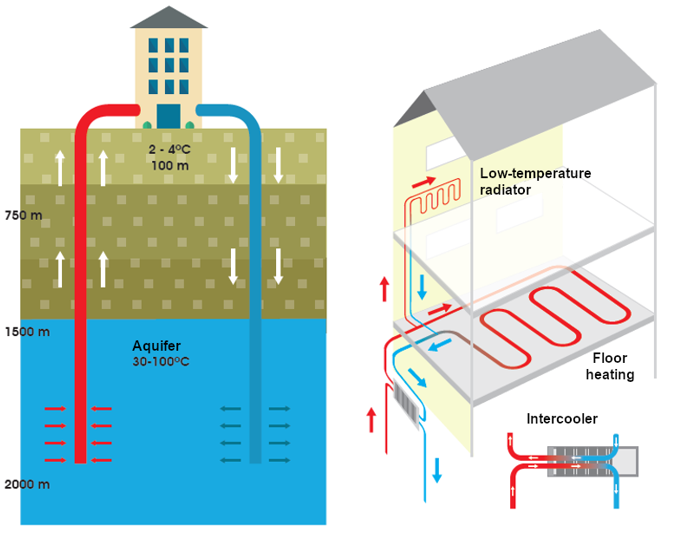
D2.1 Geothermal energy deployment
The lessons relevant to GreenJOBS from the deployment of geothermal energy can be summarised as follows:
- End-of-life underground coal mines present a unique opportunity for geothermal energy production. These mines have already been excavated to great depths, so they have access to the earth’s natural heat. By repurposing the existing infrastructure, it is possible to create a geothermal power plant that produces electricity and heat with minimal environmental impact, as far as the shaft is close to the potential clients.
- Choosing a geothermal technology requires consideration of environmental aspects because the quality of surface waters to which loads of pollutants could be discharged together with industrial sewage or mine water is very low. For this reason, when choosing technologies based on an open-loop system, an environmental analysis should be carried out to limit the negative impact of mine water on the environment.
- Geothermal energy is a reliable and constant source of energy that can power homes, businesses, and industries for decades. This makes it an attractive option for countries looking to reduce their reliance on fossil fuels and increase their energy security. Moreover, providing renewable energy, guaranteeing savings in energy costs and maintaining and replacing components, etc., may be attractive to potential consumers.
- The process of extracting geothermal energy from coal mines involves pumping water from the mines and using the heat to generate steam, which can then be used to power turbines and generate electricity. The need, in many cases, to pump water regardless of the presence of a geothermal installation helps increase the geothermal project’s financial outcomes, as pump costs can be considered sunk costs.
- Due to variations in the quantity of pumped water, temperature and quality, geothermal system mining areas should be selected after a feasibility study. In case of low-quality mine water, installing a heat exchanger inside the underground reservoir in a closed loop system is recommended. If the mine water quality is good, it is preferable to install an open-loop system.
2.2.- Photovoltaic deployment
Photovoltaic technology is one of the fastest-growing renewable energy technologies. However, as any technology, the deployment embeds a number of challenges, boundaries and cons. Difficulties related the lack of raw materials, the increasing prices of PV cells and electronic devices; or related to important requirements to cover, such as land needs, environmental regulations or the “Do No Harm principle”, among others, may lead the depreciation of some investment initiatives.
Thus, a deeper knowledge of such boundaries may help to figure out how to reduce or overcome such difficulties during the project definition, and to define the priorities in the technological development. For example, identifying most appropriate locations where to elaborate consistent viability analysis, adapting the technology to the site. To do that, an exhaustive revision of the different elements conforming a solar PV system is conducted here. Also, main typologies and features of coal mines have been described, defining a generic characterization of such facilities to identify and highlight those singularities of mining areas which could create competitive advantages as potential locations for PV installations.
Taking this into account, two different but complementary scenarios have been identified and drafted as potential use cases. The characterization of these use cases and the definition of specific operational requirements will help to reinforce arguments in favour of using coal mining areas as proper locations of PV systems; but also, to select best technologies to better fit the aforementioned requirements.
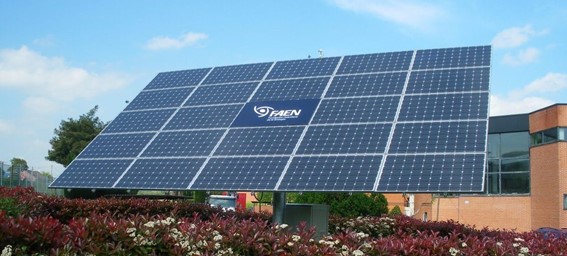
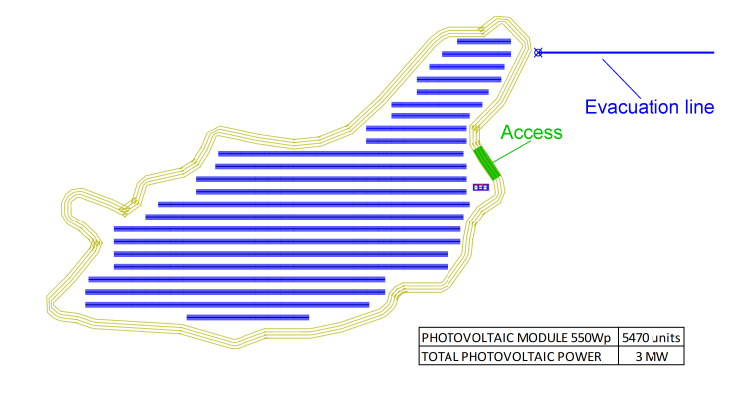
The lessons relevant to GreenJOBS from the deployment of photovoltaic energy can be summarised as follows:
- The repurposing of end-of-life coal-related assets and infrastructure at coal mines for photovoltaic (PV) installation plants offers a promising approach for recovering unproductive lands and generating renewable energy.
- PV technology is highly modular and ranges in size from small solar home kits to systems with capacity in the hundreds of megawatts, offering a democratised electricity production.
- Due to the huge variety of features and types of mine sites, a multi-criteria reasoning analysis should be performed to determine the best technology by scenario.
- Leveraging closed coal mines for photovoltaic installation plants presents an opportunity for social, environmental, and economic development while creating new job opportunities in emerging renewable energy sectors.
- Aspects like the existence of Interconnection Points could contribute to reduce costs, or timing in executing projects; also, the needs of restoring lands could facilitate permits or licences related to the use of lands for PV projects.
2.3.- Wind power deployment
The wind energy sector is constantly growing and therefore has a positive influence on the European economy. This is reflected in economic growth and the creation of sustainable jobs. As a result, wind energy is particularly popular in research and the optimization of associated processes is constantly being promoted. This includes not only the technology that is used, but also the characterization and distribution of wind energy.
In order to undertake the integration and installation, the associated advantages and disadvantages of this resource are of importance: clean energy, low operating and efficiency costs, as well as high market potential, saving water and creating jobs. The disadvantages in turn are ranging from the specific local conditions, nature and animal protection, the shadow flicker phenomenon and the reliability of the wind resource itself. Apart from that, the demand for rare earths for the production of wind turbines is rising and exceeding existing reserves, while imports and dependencies increase to meet climate goals and a green transition. The planning and approval of such processes are laid down in law. For example, the following aspects must be considered: avifaunistic assessment, noise assessment, shadow assessment, turbulence assessment and geotechnical report.
This report considers the employment effects related to wind energy; the entire value chain of projects for the installation and use of wind power (extraction and processing of raw materials, associated equipment construction and logistics); and project planning and installation. In any case the maintenance and operation, energy delivery, repowering and, after the end of the term, decommissioning and subsequent recycling is needed. Finally, some successful application examples for wind turbines on heaps follow, both in former and still active mining locations. Some of these post-mining examples can be found in Germany, such as the Hoppenbruch heap in the city of Herten in the Ruhr area. However, European heaps largely have one thing in common: their material is often too soft to withstand a superstructure and as a result requires soil improvement and support structures to ensure buildability of wind turbines.
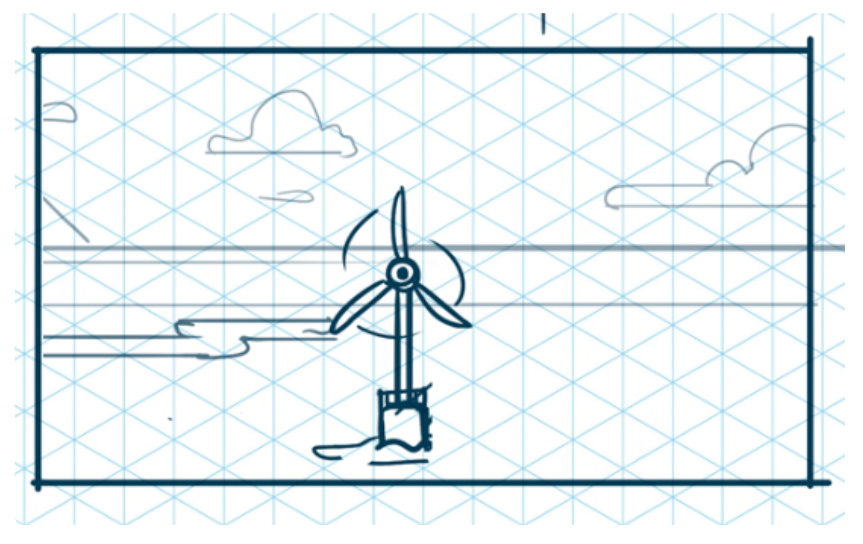
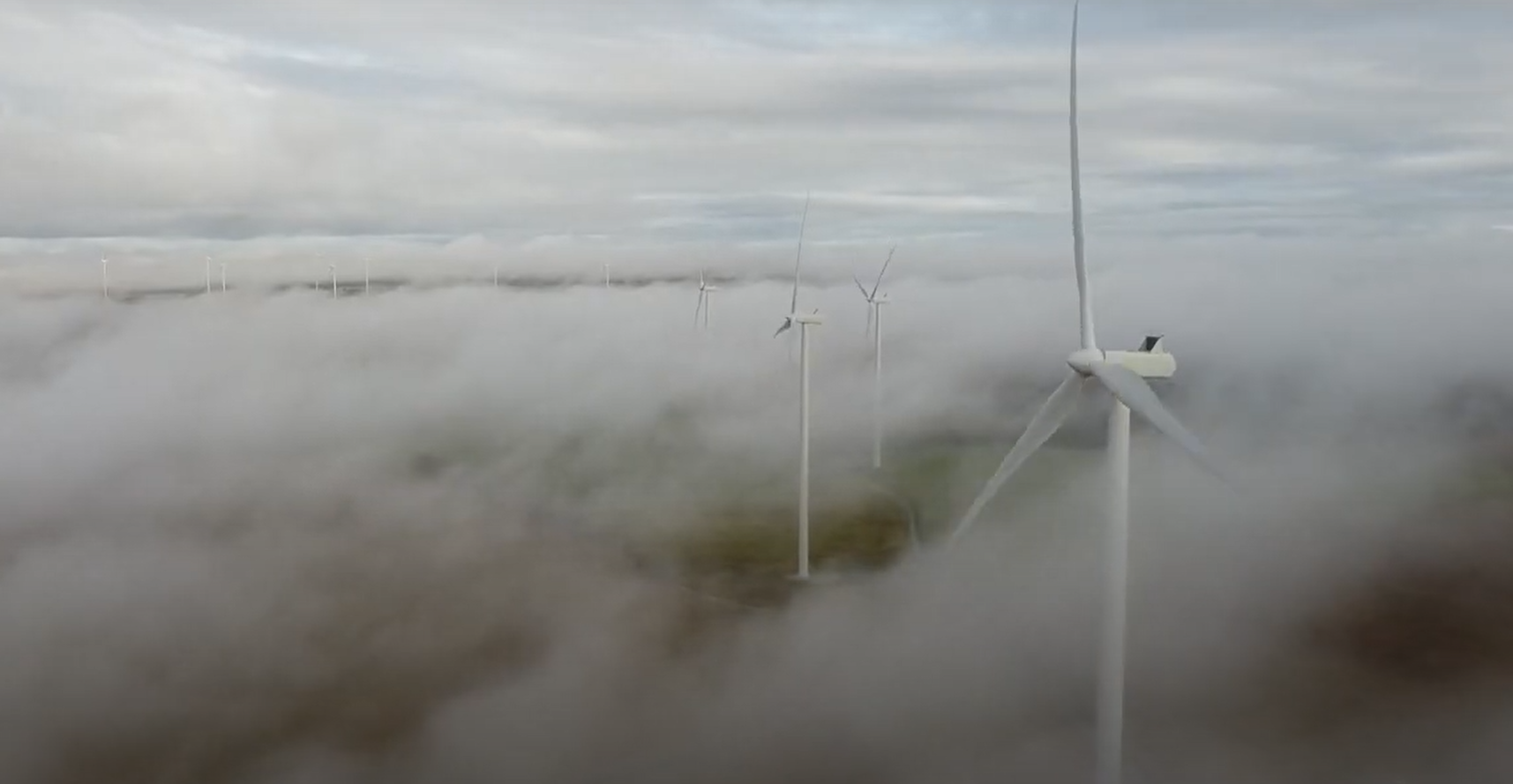
The lessons relevant to GreenJOBS from the deployment of wind power energy can be summarised as follows:
- Russia’s war against Ukraine has exposed Europe’s dependence on fossil fuels and, alongside the climate crisis, poses another important reason for independence through the promotion of renewable energies such as wind power. This needs to be pushed forward as soon as possible, including the former European coalfields for the conversion and new use of closed mines and existing stockpiles.
- To achieve the climate goals and the expansion of wind power, an increase in demand of between 2 and 15 times the current level can be expected. Many of the materials needed are, among others, rare earth, which are mainly found in China. Here a 15-fold increase in demand for rare earth, which are irreplaceable for the construction of plants, can be calculated. This already exceeds the availability for the entire EU on the market.
- Wind power has many advantages in the assessment: clean energy, renewable resource, operation costs close to zero, cost-effectiveness, technological advances benefit falling prices by 80% since 1980 and are expected to further decrease, development in design optimisation, the market potential is rising, wind power saves water compared to traditional energy production methods, and job growth
- Wind power still has some disadvantages: competition when it comes to low costs with other renewable options such as solar power, locations are mostly remote and this makes a supply in urban areas more difficult, reliability of wind itself, wildlife is often disrupted or endangered by rotor blades, disturbance through the average noise level, and the phenomenon of the shadow flicker is disturbing in urban areas.
- The requirements for legal planning of wind turbines are avifaunistic assessment, noise assessment, shadow assessment, turbulence assessment and geotechnical report. The geotechnical investigation of spoil heaps has determined that most of them have a common problem: The material is too soft to withstand the superstructure and therefore requires supporting structures and soil improvements through upgrading the spoil heaps and deep foundations.
2.4.- Unconventional pumped hydro deployment
Hydropower in energy generation expansion plays a minor role. However, it has a essential role as an energy storage system, as it can be dispatched when prices are high and, where possible, operated in pumping mode when prices are low. It is an excellent opportunity for Spain, which is on the verge of becoming the first developed industrial country to have a power system dominated by photovoltaic, and to a lesser extent, other non‐dispatchable technologies with zero variable cost, something that starts to be shown in its prices.
Unconventional pumped hydro storage characteristics are presented according to patent nº WO 2019/202456 A1 (2019) that is the property of one of GreenJOBS partners: Magellan & Barents, S.L.: Upper and lower reservoirs within mining embodiments; penstock portions; high-density fluid to be used based on slurry mixtures; surfactants that should be added to prevent freezing of the slurry; etc.
Unconventional pumped hydro storage features in a mining area are pointed out using the example of the Nicolasa mine in Asturias, Spain. Conditions appear extremely attractive for a first‐of‐a‐kind project: Lithology and topography are favourable. A massive formation of quarzitic puddingstone with high strength and low permeability runs for 800 meters along an escarpment. On the other hand, the mining infrastructure allows inspection of the cavern and even rock removal for additional capacity, with existing conveyor belts in working condition. Dense fluid materials are available and can be sourced nearby as the suitability of materials from a nearby coal-washing installation was validated.
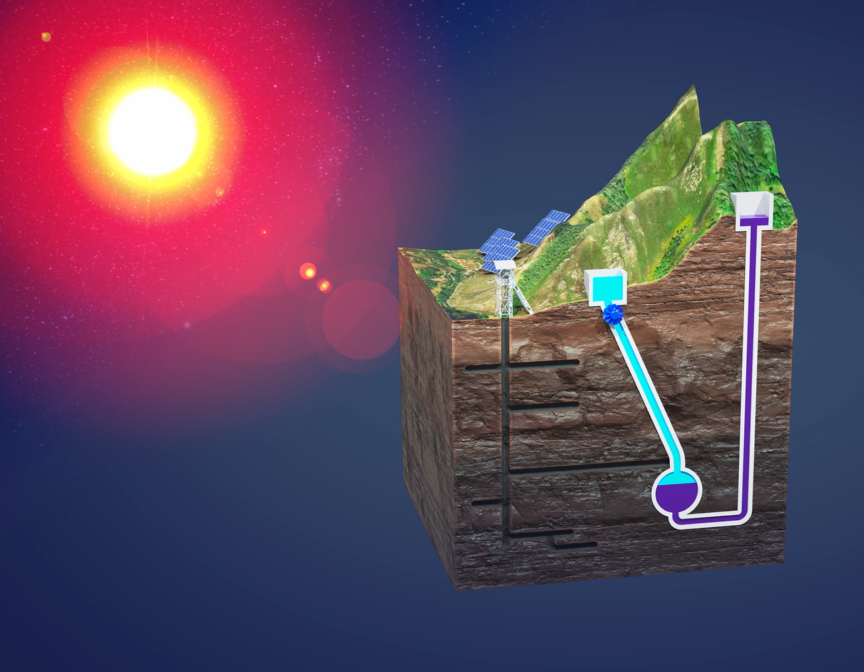
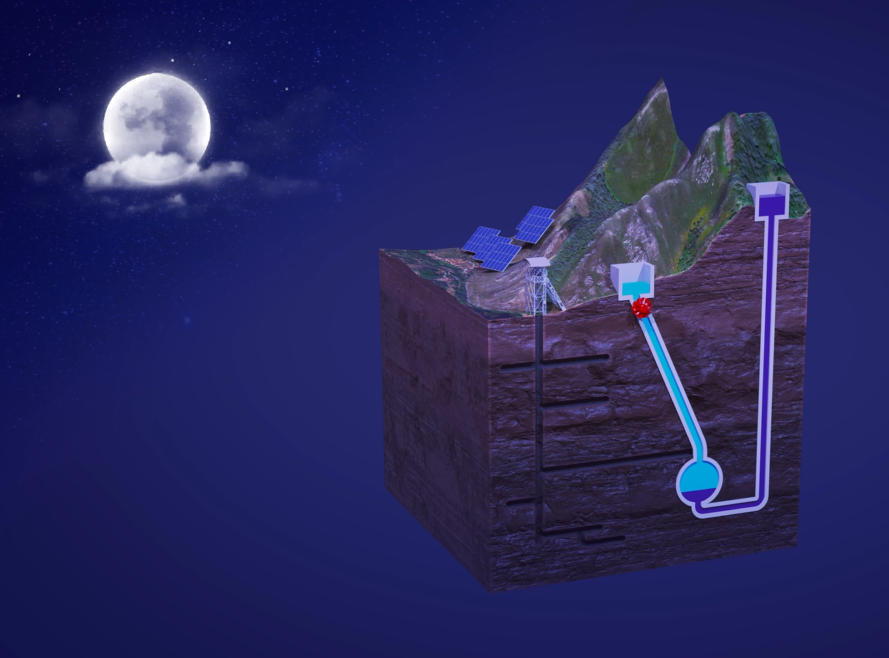
D2.4 Unconventional pumped hydro deployment
The lessons relevant to GreenJOBS from this deliverable can be summarised as follows:
- When wind power and especially photovoltaic become dominant, their daily generation patterns will induce volatile prices, with a long valley at daylight hours (which happen to be peak hours for power demand) and two price peaks before sunrise and after sunset when PV capacity falls sharply (somewhat paradoxically as both price spikes usually take place when demand is at a minimum).
- Photovoltaics and wind power are causing energy storage to become a critical part of the energy transition because photovoltaics and onshore wind power are achieving cost leadership among all power generation technologies. Simultaneously, they depend highly on nature, which is undependable or unreliable at best.
- While conventional hydropower systems stabilise the imbalances of supply and demand, which are inherent in photovoltaic and wind power, at the same time, the footprint required by the reservoirs is high. For its part, unconventional pumped hydro storage is directed to a small footprint, a method with high power output as this system uses high-density fluids that allow for a given reservoir or tank volume, an energy storage capacity proportional to the density of the fluid.
2.5.- Batteries deployment
Diabatic compressed-air energy storage (CAES) is estimated to be the lowest-cost storage technology on an installed cost basis at durations equal to or bigger than 4 hours and 100 MW. Something similar happens with other technologies, such as Pumped storage hydropower (PSH). Indeed, no storage technology different from batteries is used when considering 10 MW.
Li-ion batteries are the most exciting technology. They consist of a battery based on charge and discharge reactions from a lithiated metal oxide cathode and a graphite anode. Lithium-ion batteries are used in various ways, from electric vehicles to residential batteries to grid-scale applications. They have high energy densities, high efficiency and a long life cycle, although with high production costs and require special charging circuits. There are two more commonly used lithium-ion chemistries: Nickel Manganese Cobalt (NMC) and Lithium Iron Phosphate (LFP).
The one selected between NMC and LFP will depend mainly on the price. This aspect is analysed when identifying the best technology for mining areas, as well as the operational requirements of the selected technology.
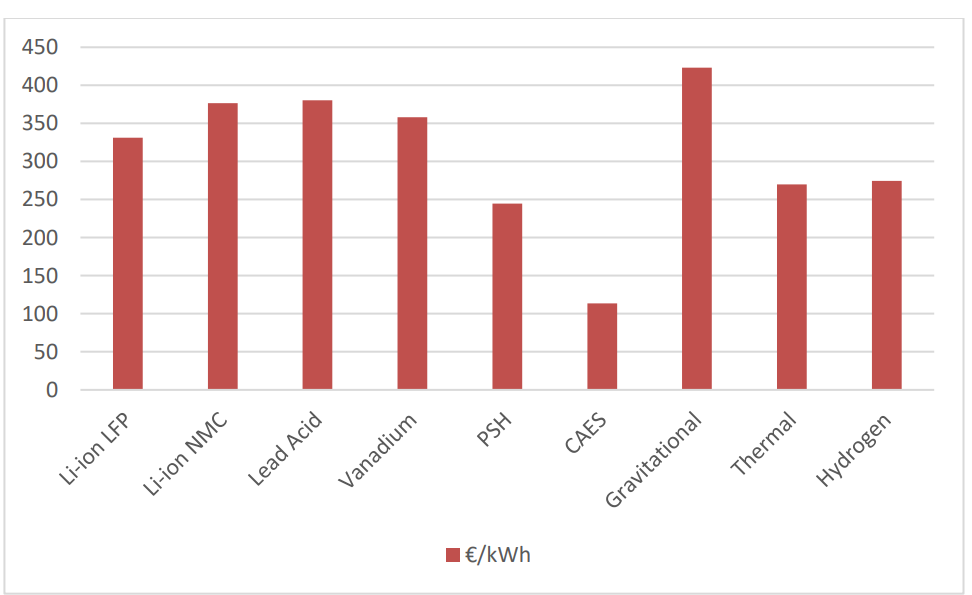

The lessons relevant to the Project from this deliverable can be summarised as follows:
- Diabatic compressed-air energy storage (CAES) is the most economical energy storage system for 10 hours and 100 MW. It is followed by Pumped storage hydropower (PSH) and Thermal energy storage, predominantly molten nitrate salt. However, other storage media, such as crushed rock, sand, concrete, brick, or cast iron, can be considered.
- When requiring energy storage for less than 4 hours and around 10 MW, only batteries are considered and used as feasible energy storage system.
- Currently, Li-ion batteries are the most exciting energy storage system to be used for 2 hours and 10 MW. According to the price, Lithium-ion Iron Phosphate (LFP) batteries are the most interesting, as they are more than 10% cheaper than Lithium-ion Nickel Manganese Cobalt (NMC).
- The rest of characteristics of LFP and NMC are quite similar: rated power, energy density, efficiency, life cycle, charge/discharge, specific needs, dangers and maturity.
2.6.- Green Hydrogen Deployment
Hydrogen has the potential to provide safe, economically competitive, environmental friendly and emission-free energy, but its current penetration in the energy sector is still limited. Hydrogen has the potential to replace fossil fuels in the main areas of energy consumption, including, industrial, transport and, even, buildings sectors, making it a competitive and complementary solution to electrification to achieve a future without emissions. It can cover the energy needs of these sectors even when they are large, require seasonal storage or do not admit electrification.
Hydrogen can compensate for the intermittency of renewable energies by acting as a transportable energy carrier and storable in the gas infrastructures that already exist in most developed countries. Therefore, it is important to assess the storage capacity of the existing gas transmission network and the modifications needed to accommodate to hydrogen or to hydrogen combined with natural gas. Therefore low-carbon hydrogen is a part of the different national plans that form the EU hydrogen strategy and in line with the European Green Deal as the most important document for the decarbonisation of the EU economy by 2050.
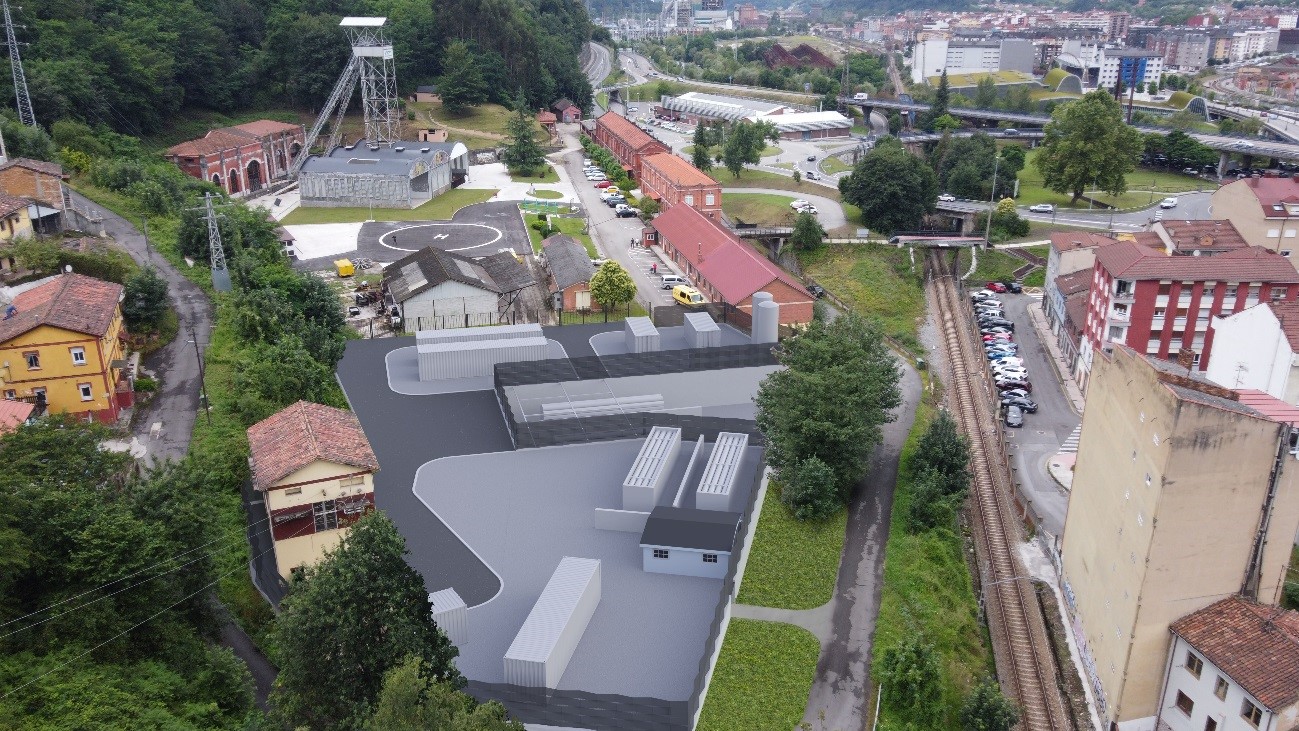
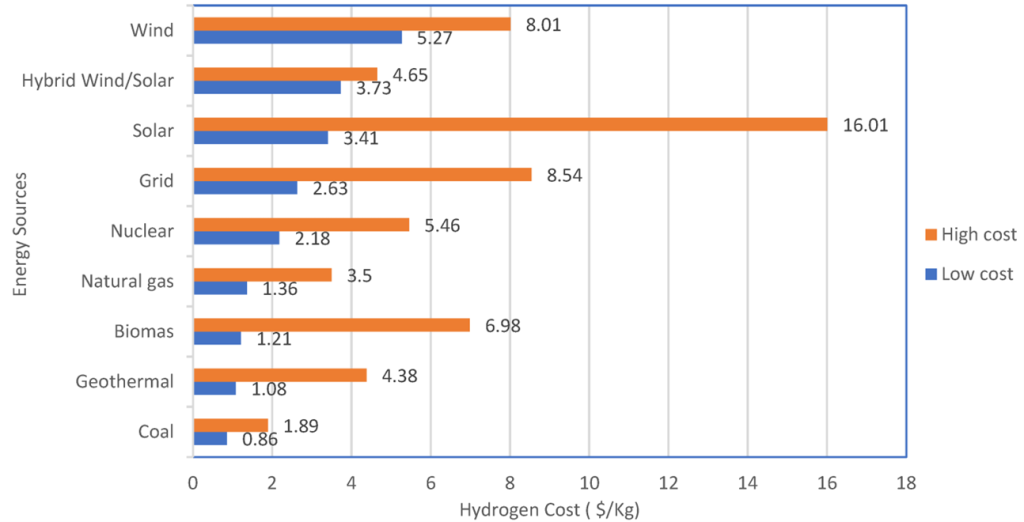
D2.6 Green Hydrogen deployment
The lessons relevant to the Project from this deliverable can be summarised as follows:
- The production of hydrogen via electrolysis is expensive. Economic assessment developed for the purpose of this study showed that the investment is not feasible unless a specific subvention is obtained for developing the Green hydrogen plant.
- This aligns with the 50% subvention given by the Big Ticket call for proposals within the Research Fund for Coal and Steel (RFCS).
- Although it is currently in a very incipient phase, the rapid development of the technology of the green H2 will allow its jump to the commercial phase in a short space of time. This combination of processes brings environmental benefits of great importance for the area both by the absence of pollution and by the reduction of emissions of CO2 expected.
3.- Deploying circular economy technologies
3.1.- Dense fluids for pumped hydro
The development of dense fluids required for unconventional pumped hydro by means of using fine coal waste from the three case studies of the project was analysed. The characteristic to be sought is a dense fluid with a density up to three, in order to achieve a yield up to three times that of the conventional pumped hydro.
To achieve this goal, rheology studies consisting on determining the stationary viscous and linear viscoelastic responses of the samples were developed. The rheometric test was specifically designed to obtain the stationary viscous response of the samples under study. The ability of the samples studied to dissipate and store the energy supplied to them, i.e. the determination of their viscous and elastic components, was obtained by performing an oscillating shear rheometric test (also known as mechanical-dynamic analysis). The viscoelastic study was carried out to determine the characteristic time of each sample (relaxation time), which gives an idea of the dominant behaviour (viscous or elastic) depending on the duration of the mechanical action exerted on the material behaviour (viscous or elastic) as a function of the duration of the mechanical action exerted on the material.
Also, the pumping capacities of a high-density fluid material using the finite volume method (CFD) were analysed using ANSYS FLUENT software, version 2021 R1, focused on obtaining the mass flow curves as a function of pressure and pumping head and the maximum pumping head.

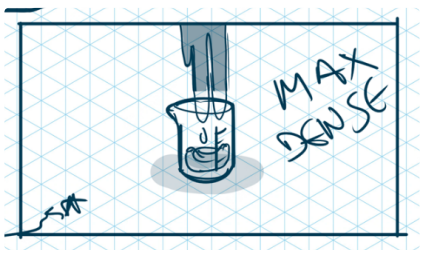
D3.1 Dense fluids for pumped hydro
The lessons relevant to the Project from this deliverable can be summarised as follows:
- A small surfactant (less than 1%) should be added to prevent the slurry from coalescing and improve flow. In some cases, antifreeze may be added to prevent freezing of the slurry. The concentration of antifreeze should be sufficient to prevent the slurry from freezing.
- In all cases, in the viscous response and in the range of shear rates that were accessible (reproducible results), it was observed that viscosity decreases with increasing shear rate.
- The viscoelastic study was carried out to determine the characteristic time of each sample (relaxation time), which gives an idea of the dominant behaviour (viscous or elastic) depending on the duration of the mechanical action exerted on the material behaviour as a function of the duration of the mechanical action exerted on the material. This study is defined in the linear viscoelastic response region.
- The results of the fluid-dynamic analysis, in conjunction with the rheology test data, show the pumping capabilities of the high-density fluid, particularly in the upward direction.
- The dumpsite minerals from the mines are initially attractive as base materials for dense fluids. The samples from Slovenia and Spain show values in the interval bounded by our contrast formulations, which have already been used to prepare dense fluids. The sample for Poland is out of bounds but might also be helpful.
3.2.- Soil substitutes for restoration
Artificial soil substitutes for land reclamation of coal mine-affected areas in the northeastern region of Slovenia (Velenje), were prepared based on by-products from lignite coal combustion: fly ash, gypsum from desulfurization, and sludges from technological water. The components’ high pH, high salinity and low organic matter level are responsible for the lack of plant sproutings.
To improve the conditions for plant growth, lignite coal and green compost from biological manufacturing were tested as additives to the mixture. The optimal composition of artificial soil was developed based on the results of the physicochemical and phytotoxicity analyses.
Sufficient plant growth was obtained; however, concentrations of some toxic metals could slightly exceed warning values according to the regulations in the Republic of Slovenia (As, Cd, Mo and Zn). An additional review of the local laws has to be done to ensure that final products can be used in the reclamation processes.
Based on the results of the physicochemical analyses and phytotoxicity test, the possibility of using mining water from the Premogovnik Velenje coal mine to irrigate vegetation was confirmed. However, salinity and the concentration of molybdenum in that water slightly exceed the recommended threshold for prolonged irrigation use. The concentration of soluble salts and molybdenum and the possible toxic effects on plants and soil organisms should be monitored in areas where long-time irrigation was applied.


D3.2 Soil substitutes for restoration
The lessons relevant to the Project from this deliverable can be summarised as follows:
- Due to its high organic matter content, coal lignite from Premogovnik Velenje Coal Mine is a valuable component of soil substituent. However, to improve soil characteristics such as texture, fertility, water-holding capacity and structure, it is essential to apply other organic materials in the form of ecologically friendly compost from a biological manufacturing process.
- Before developing soil substitute mixtures, exploring the local market for suppliers of green compost, a material rich in organic matter and low content of toxic metals, is essential.
- The most critical parameters for the water extract of tested components can be limited to pH, electrolytic conductivity, primary ions and main heavy metals.
- Industrial products and organic waste with the lowest possible pH and electrolytic conductivity should be qualified for further testing and analysis.
- Fly ash is the most harmful component of stabilizat for germination and plant growth. For this reason, it is essential to avoid raising its amount for soil substitute production.
- Mine water is suitable for periodic vegetation irrigation in post-mining reclamation areas.
3.3.- Recovery of rare earths
The purpose of this work was to identify potential approaches for the concentration of mixed rare earth oxides from fine coal waste from the three case studies: Spain (HUNOSA), Poland (WEGLO), and Slovenia (PV).
The samples were first be divided into different particle size fractions >2.0 mm, 2.0-0.5 mm, 0.5-0.1 mm, <0.1 mm, because these are the sizes that would be obtained at various process points in the coal washing plants. Subsequently, laboratory analysis were developed for each fraction to identify rare earth contents and the mineralogical species present. The methods used were the Inductively Coupled Plasma-Atomic Emission Spectrometers (ICP-AES) and the X-Ray Fluorescence (XRF).
With the data obtained, rare earth release and concentration analyses were carried out to decide the particle sizes that will allow a higher recovery of rare earths.
Next, since almost all rare earth minerals are very dense, gravimetric concentration analysis was developed in the first place to obtain a dense wet concentrate. The equipment used depended on the liberation analysis: multigravity separator for sizes <0.1 mm, shaking tables for sizes between 0.1 and 0.5 mm, and pulsation box for sizes between 0.5 and 2.0 mm.
Secondly, based on the paramagnetic character of rare earth minerals, the dense concentrates were subjected to high field strength magnetic separation, using a dry route for particle sizes >0.1 mm.
Next, and based on the non-conductive character of most rare earth minerals, a high voltage electric field separation (30-40 kV) was carried out for particle sizes between 0.1 and 0.5 mm (dry route).
Finally, a froth flotation test for particles >0.02 mm was also carried out.


The lessons relevant to the Project from this deliverable can be summarised as follows:
- Initial preparation of samples usually requires between 3 and 15 days to dry at laboratory temperature, so the next steps could follow.
- The initial analysis of the samples revealed that quantitative analysis of elements gives much more representative data than the analysis of compounds, due to the detection limits of the chosen analytical methods.
- There are slight differences between the results of the initial samples and the different particle size fractions. They should be due to the fact that no sampling analysis were made with the initial samples.
- The rare earths concentration is very similar in the three countries analysed. However, El Batán sample from Spain, which has a high content in coal, has a significative concentration of Ytterbium (Yb) and in Praseodymium (Pr), while a lower concentration of Scandium (Sc), Yttrium (Y), Neodymium (Nd) and Samarium (Sm).
- Since the analyses performed show very similar rare earth concentrations in the three countries considered, only the possibilities of rare earth concentration in the two Spanish samples were studied in detail. The results are expected to be mostly extrapolated from one waste to another.
- Pulsation box gravimetric concentration tend to concentrate rare earths in the denser fractions, but nothing really significative.
- High field strength magnetic separation seems to be the only concentration method that allows a higher recovery of Scandium (Sc), Yttrium (Y), and Cerium (Ce), but only within the fraction 0.1 – 0.5 mm.
- Rare earth concentrations obtained from analyses range from 150-310 ppm, which is around 0.015-0.031%. For a mine to be mineable, concentrations between 1 and 2% are required. This gives an idea that the amount of rare earths present in the tailings dumps in the three countries (Spain, Poland and Slovenia) is too low to be economically viable for exploitation.
4.- A renewable-powered future
4.1.- Bobrek-Piekary mining complex in Poland
A comprehensive exploration of the opportunities for transforming the Bobrek coal mine in Poland into a centre for renewable energy production and circular economy initiatives was developed. The Bobrek mine in Bytom in the Silesian Voivodeship represents a promising case study with potential applications across other mining regions.
The primary objectives cover feasibility assessments and strategic deployments for geothermal, photovoltaic, wind, and hydrogen energy production and unconventional energy storage, promoting energy system flexibility. These deployments intend to optimise the utilisation of existing mine infrastructures, minimising additional environmental impact while creating new business opportunities. A significant focus is placed on geothermal energy potential, leveraging mine water for heat and energy production, alongside the conversion of mine shafts for energy storage via pumped hydro and gravity-based methods.
These renewable energy initiatives are intended to replace traditional energy production and offer innovative, efficient alternatives that utilize the Bobrek mine’s existing infrastructure, minimising additional environmental impact and capitalising on unique geological and infrastructural advantages.


The lessons relevant to the Project from this deliverable that is not presented here due to confidentiality reasons can be summarised as follows:
- The Bobrek mine is well connected by rail, with rail tracks running through the mine. However, a potential problem to be solved is the exit/entry to the mine site, which currently can only be done from the local road. The extension of the access road to the mine is critical in the context of creating new jobs on the site.
- The possibility of producing heat/energy from pumped mine water using a system of two mine shafts presents the problem associated with the maintenance cost of the mine shafts.
- Transforming the Coal Processing Plant at the Bobrek Mine into an Electronic Waste Recycling Facility introduces new functionality. Such transformation not only broadens the range of services but also opens new avenues for collaboration with other industries and institutions.
- However, launching a medium-sized PV panel recycling line, for example, requires capital expenditures that can reach many millions of euros, depending on the project’s specifics. The figures show the challenges of making such an investment profitable in the short term.
- The advantages of installing a recycled fuel production plant in Bobrek mine are the mine’s location in an area with high waste availability with a power fraction, close proximity to power and industrial plants using fuels, access to power infrastructure, media and transportation routes, and the possibility of reskilling miners. The weaknesses are the EU policy on thermochemical waste conversion and the lack of consensus in the region on the construction of large-scale thermal waste treatment plants (incinerators).
4.2.- Aller-Barredo-Figaredo mining complex in Spain
An analysis of the implementation of renewable energy in the Aller-Barredo-Figaredo complex, including its description, energy development, economic evaluation, and job creation potential, was developed. This comprehensive evaluation provides insights into the technical specifications, cost data, and operational constraints, laying the foundation for sustainable energy development in the area.
Geothermal, photovoltaic, and wind energy were all evaluated based on deployable feasibility. Storage capacities are also sized to prevent limitations from photovoltaic energy. Beyond this, options for green hydrogen production are also considered.
Detailed site-specific data analysis optimises implementing renewable energy solutions, considering factors such as solar irradiation, wind potential, and local demand. Integration of geothermal energy into urban heating and cooling networks is highlighted to enhance energy efficiency.
Energy storage solutions with batteries are sized to minimise renewable energy constraints as the cost and dimensions of unconventional pumped hydro are entirely out of scale. Optimising electrolyser utilisation rates for cost-effective green hydrogen production is also given attention.


The lessons relevant to the Project from this deliverable that is not presented here due to confidentiality reasons can be summarised as follows:
- Energy storage solutions with batteries must be sized to minimise renewable energy constraints, as the cost and dimensions of unconventional pumped hydro are entirely out of scale. Pumped storage technology has proven to be an effective solution for storing large amounts of electrical energy. However, its large-scale implementation typically requires extensive land areas and water resources. Further research in this field could uncover new opportunities to optimise the design and operation of these systems in abandoned mining environments.
- There is a big handicap relating to how wind energy can contribute to these systems, as at least a couple of years of previous measures should be needed to allow a proper energy storage solution. Without this information, daily forecasts are not possible.
- Sustainable job creation in the renewable energy sector requires more than technology deployment, as the number of jobs created only represents a minimum percentage of the jobs lost within the mining industry.
- At the current prices of green hydrogen, its deployment is not feasible unless significant subventions are given to these investments. Many green hydrogen projects, even subvention ones, are falling in Spain like dominoes fiches.
4.3.- Velenje mine in Slovenia
A comprehensive analysis of the Velenje Coal Mine (Premogovnik Velenje) and its significant role in Slovenia’s energy mix, particularly in terms of its connection to the Šoštanj Thermal Power Plant (TEŠ), which today produces a quarter of Slovenian domestic electricity is developed. In addition, it also provides fuel for remote heating systems for the whole valley, respectively, for Velenje and Šoštanj nearby towns. The system is the second largest in Slovenia.
A key proposal emerging from the document is the potential for deploying geothermal energy at the Velenje Coal Mine site. The existing advanced water management systems of the mine, designed to handle significant water volumes, can be adapted for geothermal energy extraction. This transition could utilize the geothermal heat stored beneath the Earth’s surface while minimizing the need for new infrastructure, thus lowering initial costs and operational risks.
Geothermal energy can effectively utilise the mine’s existing infrastructure, making it a cost-effective and efficient option. By adapting current structures and systems for geothermal purposes, the mine can reduce the need for new, expensive investments. Additionally, since the Velenje Mine’s mother company is already examining other energy options like wind and solar, data related to these alternatives remains confidential, complicating any comprehensive open analysis. Focusing exclusively on geothermal energy allows independent exploration without requiring access to sensitive information.
The close proximity of the Velenje mine to the Šoštanj Power Plant creates a strategic advantage, allowing for a seamless integration of geothermal energy into the current energy production framework.


The lessons relevant to the Project from this deliverable that is not presented here due to confidentiality reasons can be summarised as follows:
- The existing infrastructure at the Velenje Coal Mine, particularly its advanced water management systems, constitutes a great advantage for this investment, as it could be adapted for geothermal energy extraction.
- Premogovnik Velenje stands at a critical juncture, with the opportunity to adapt to emerging energy trends while continuing its legacy in Slovenia’s energy sector. The shift towards renewable energy sources like geothermal is vital for meeting national climate goals and ensuring the mine’s sustainable future.
- However, while geothermal energy offers a sustainable alternative, the potential for large-scale job creation in the long term remains limited. Geothermal operations, unlike coal mining, require fewer employees due to the technology’s automated nature. Although the initial phases of construction and adaptation of the current infrastructure would create some skilled jobs, the ongoing operation of a geothermal plant would require minimal staffing. Advanced monitoring systems and technologies would take over most of the operational work, reducing the overall need for a large workforce.
- Draft economic efficiency calculations confirm the project’s commercial viability and show added value. However, special attention should be given to the payback period, which is high, although not enough to discourage undertaking the investment.
5.- Frameworking training and re-skilling
5.1.- Identification and categorisation of key occupations
This deliverable identifies and categorises key occupations in coal mining and renewable energy sectors, aligning with the project’s objectives.
The focus is on a detailed analysis of the transition from traditional coal mining to renewable energy industries, particularly emphasising the value chains of geothermal, photovoltaic, wind power, unconventional pumped hydro, batteries, and green hydrogen.
A comprehensive value chain analysis was conducted for both coal mining and renewable energy sectors. This allowed for the identification of critical roles that can be transitioned from coal mining to renewable energy industries, highlighting the potential for workforce reskilling and adaptability.
By analysing current employment structures in coal mining, the report provides insights into roles well-positioned to support the growth of renewable energy projects. The findings are a foundation for policymakers, educational institutions, and energy companies to develop targeted reskilling programs. These programs will ensure that coal sector workers can successfully transition into green jobs, supporting the broader goal of a just transition. This effort promotes social inclusion and workforce sustainability, contributing to climate change mitigation objectives.


D5.1 Identification and categorisation of key occupations
The lessons relevant to the Project from this deliverable can be summarised as follows:
- The transition from coal mining to renewable energy presents significant opportunities to repurpose existing skills and infrastructures. Workers from the mining sector can be reskilled to occupy roles in green technologies, such as geothermal energy and wind power, ensuring a smoother transition for affected regions.
- A thorough value chain analysis reveals that the mining and renewable energy sectors share many structural similarities. These insights can be leveraged to align job roles across both sectors, enabling a clear roadmap for the transfer of skills between industries.
- The need for reskilling programs is critical, particularly for coal miners who possess technical knowledge applicable to renewable energy industries. Investment in tailored training initiatives can support the workforce in adapting to new technologies and fulfilling roles in the growing renewable energy sector.
- Gender disparities within the mining industry remain a challenge, with very low female participation. Addressing this issue through inclusive policies could ensure a more diverse workforce in both traditional and emerging green sectors.
- The energy transition will require not only a shift in technical skills but also an emphasis on education in project management, environmental protection, and sustainability practices. These competencies are key for the successful deployment of renewable energy projects.
- Many workers in the coal mining sector are nearing retirement age, highlighting the urgency for workforce planning strategies. The development of reskilling programs should be aligned with demographic trends to ensure a continuous and sustainable workforce.
- The growing renewable energy market demands roles in both technical and non-technical fields. Beyond engineering, there is a need for expertise in supply chain management, environmental sustainability, and project execution, underscoring the importance of multidisciplinary education and training.
5.2.- Mapping and assessment of key occupations
As Europe accelerates its transition towards a low-carbon future, regions historically reliant on coal mining face the dual challenge of economic restructuring and workforce reintegration. This report, developed as part of the GreenJOBS initiative, explores the re-skilling potential of workers in coal-dependent regions by mapping occupations, identifying transferable competencies, and designing targeted training interventions aligned with the renewable energy sector (RES).
Drawing on comprehensive field data from GreenJOBS project partner, the study presents a methodology rooted in ESCO-based occupational mapping and value chain analysis. Key occupations were assessed for their adaptability to RES sectors such as photovoltaics, wind energy, geothermal, green hydrogen, and energy storage. Findings highlight significant opportunities for reskilling, particularly for medium-skilled technical workers whose existing competencies – such as equipment maintenance, electrical systems, and safety compliance – are readily transferable to RES roles.
The report also analyses the competency gaps that must be bridged to ensure a successful transition. While many workers demonstrate high adaptability and openness to technological change, gaps in digital literacy, interdisciplinary collaboration, and sustainability-oriented thinking remain. Tailored, modular training programmes, will be essential to meet these needs.
A particular focus is given to the development of flexible, site-specific education models that recognise prior learning, accommodate diverse skill levels, and address demographic trends such as ageing workforces. In parallel, the study calls for strong policy support and strategic investment in human capital to ensure a Just Transition that is both socially inclusive and economically sustainable. This document is intended as a practical reference for policy-makers, industry stakeholders, training providers, and regional planners involved in the energy transition. By identifying actionable pathways for workforce reskilling, it offers a framework for aligning local labour profiles with the evolving needs of the green economy – turning structural challenges into long-term development opportunities.
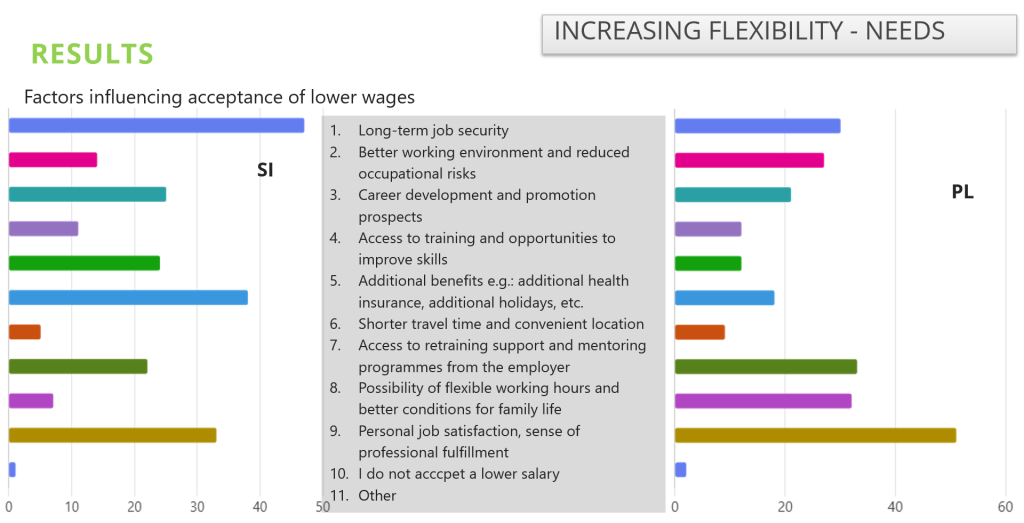
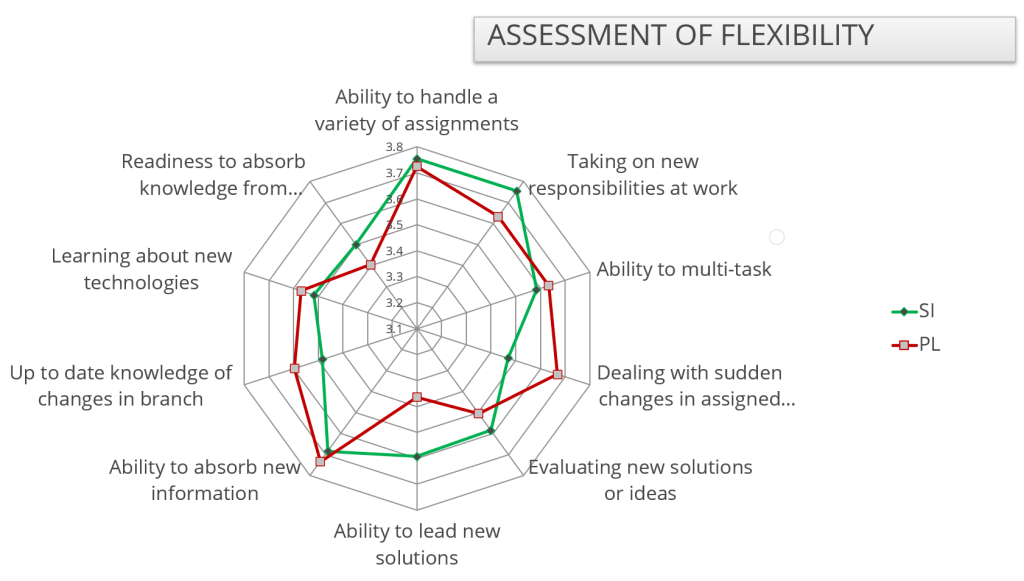
The lessons relevant to the Project from this deliverable can be summarised as follows:
- The transition from coal mining to renewable energy is a realistic and achievable pathway for maintaining regional employment, particularly in coal-dependent areas. The analysis shows that existing skillsets in the mining sector can be effectively reoriented toward renewable energy applications, especially in wind, photovoltaic, geothermal, and energy storage technologies.
- Occupational mapping using the ESCO framework confirms significant overlaps between technical mining roles and positions in the renewable energy value chain. Occupations such as electricians, mechanics, and equipment operators display high transition potential due to their familiarity with safety protocols, technical diagnostics, and equipment handling.
- There is a pronounced need to bridge skill gaps in digital systems, sustainability principles, and interdisciplinary collaboration. Competencies in digital tools, data interpretation, and environmental governance were identified as underdeveloped yet increasingly critical in renewable energy roles. These findings highlight the importance of updating training curricula with both technical and transversal content.
- The surveyed workforce demonstrates readiness for transformation, with strong indicators of adaptability and motivation to learn. High levels of self-reported learning capacity and willingness to embrace new technologies create a solid foundation for successful re-skilling interventions, particularly when training is modular, contextualised, and employer-supported.
- Workforce development strategies must be tailored to demographic trends. With a considerable proportion of miners approaching retirement, training initiatives should be aligned with life-cycle employment strategies—targeting younger workers for long-term capacity building while also enabling experienced staff to contribute through mentoring, coaching, or advisory roles.
- Company- and region-specific differences must be acknowledged in designing training solutions. The study found variation in preferred learning methods: for example, Slovenian respondents valued peer learning and on-the-job mentoring, while Polish workers expressed a preference for formal, instructor-led training. Flexibility and contextual adaptation are therefore key.
- Efforts to future-proof the workforce should include strategies to broaden participation and access. While the mining sector has historically lacked workforce diversity, the emergence of renewable energy industries presents an opportunity to encourage broader inclusion – not only by gender, but also in terms of age, educational background, and occupational pathways. Training offers should therefore be inclusive, accessible, and sensitive to differing learner profiles.
- Non-technical competencies are emerging as equally critical to energy transition success. Skills in project planning, stakeholder communication, environmental compliance, and risk management are increasingly valued alongside technical expertise. Interdisciplinary training is essential to prepare workers for the complex, integrated nature of renewable energy operations.
- The integrated methodology piloted in this task combining, ESCO-based mapping, survey research, and workforce profiling, has proven effective. It enabled precise identification of transferable skills, training gaps, and re-skilling potential, forming a practical basis for future curriculum development and labour policy planning.
- Ultimately, the reskilling of coal workers is not only possible, it is essential. The findings affirm that with the right tools, partnerships, and pedagogical approaches, displaced workers can be empowered to actively participate in the green transition, supporting social cohesion and economic resilience in structurally affected regions.
5.3.- Training and re-skilling programmes
The shift from coal-based economies to renewable energy systems represents both a technological and a social challenge. In former coal regions, the decline of mining has left communities facing the urgent need for economic alternatives and re-employment opportunities. A just transition requires equipping former mining workers with the skills needed to access new green jobs and actively contribute to the energy transition.
This deliverable addresses that challenge by presenting a set of training and re-skilling programmes tailored to support the transfer of competences from coal mining to renewable energy sectors. While coal mining relied on technical expertise in equipment handling, electrical and mechanical maintenance, process operation, and safety protocols, many of these skills are directly applicable to technologies such as solar, wind, hydropower, green hydrogen, and energy storage. Recognising and leveraging these transferable competences allows training initiatives to be designed efficiently, minimising costs and reducing time to qualification.
The programmes proposed in this deliverable are structured across different educational levels to ensure inclusiveness and accessibility. At vocational and apprenticeship levels, they provide practical training for operational roles. In continuing education, they target supervisory and technical positions, while at university level they introduce cross-sectoral programmes designed to prepare graduates for complex, multidisciplinary challenges.
All programmes are aligned with the European Qualifications Framework (EQF), ensuring both academic recognition and professional relevance. Their modular and flexible structure, built on micro-credentials where appropriate, enables progressive skill acquisition and supports lifelong learning. The deliverable provides a comprehensive framework for transforming existing mining competencies into future-oriented capabilities for the renewable energy sector.
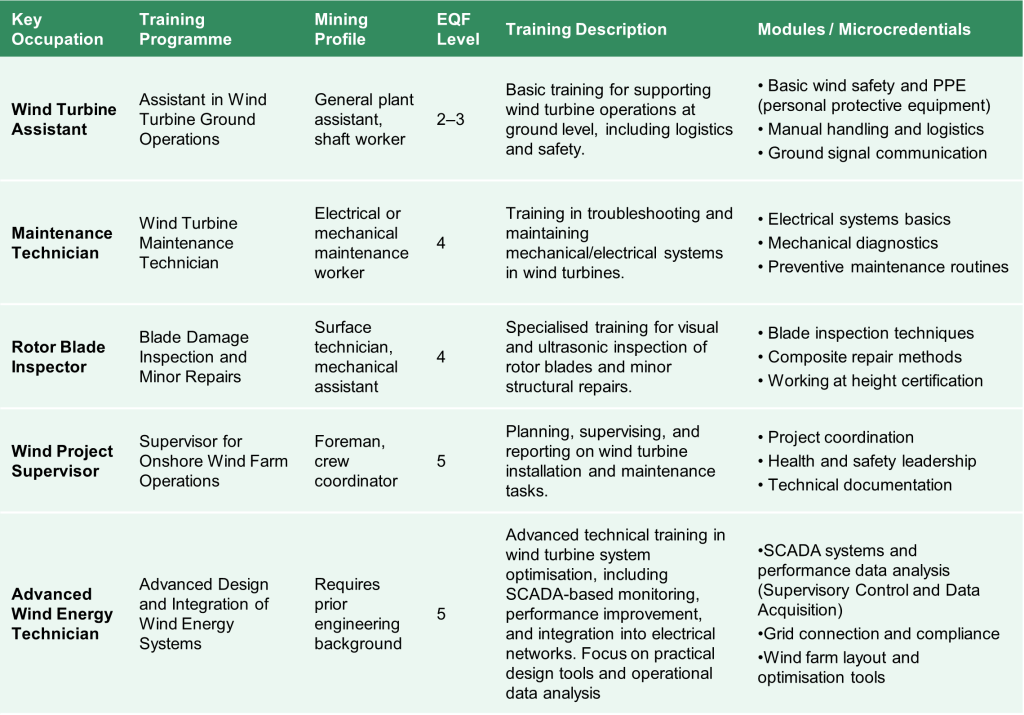
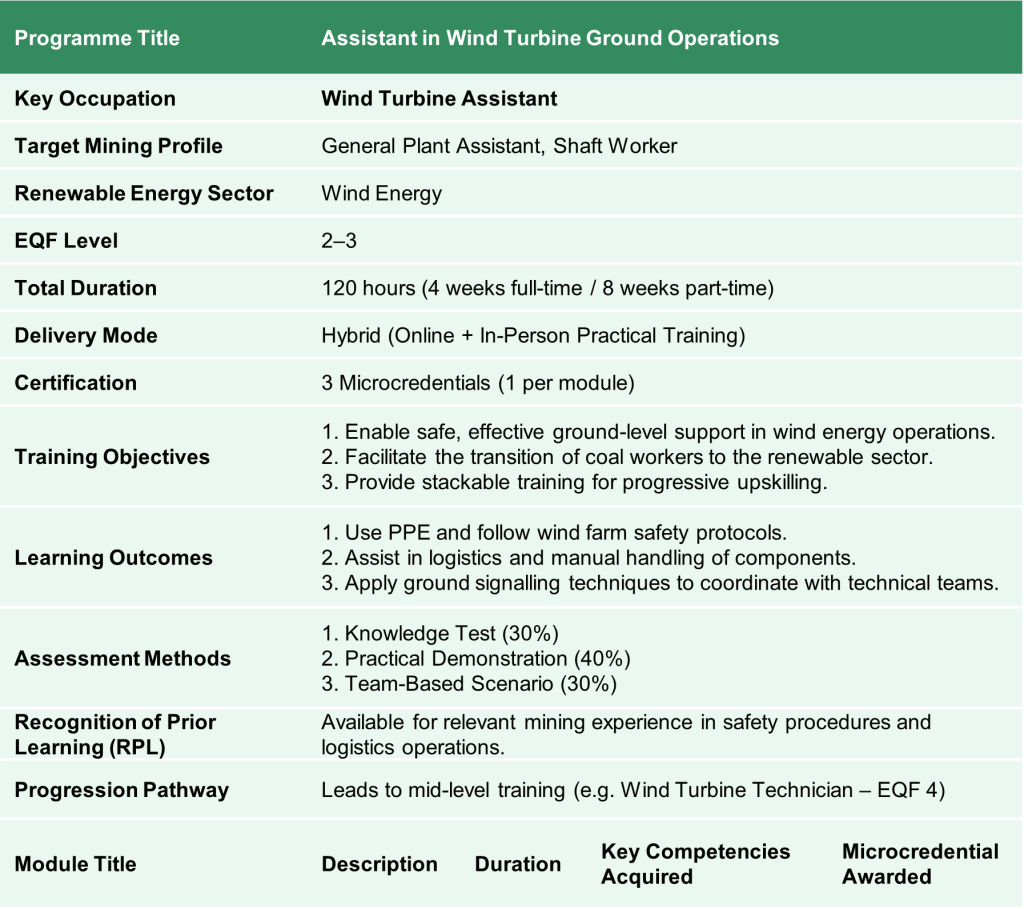
D5.3 Training and re-skilling programmes
The lessons relevant to the Project from this deliverable can be summarised as follows:
- Transferability of competences: Coal mining workers hold technical skills in safety, maintenance, and process control that can be effectively adapted to renewable energy, offering a solid foundation for re-skilling.
- Need for modular and flexible learning: Training programmes structured through micro-credentials and modular units allow progressive acquisition of competences, recognition at each stage, and adaptability to evolving industry needs.
- Importance of alignment with EQF: Referencing the European Qualifications Framework ensures recognition, portability, and comparability of training outcomes across countries and sectors.
- Multi-level educational approach: Addressing vocational, technical, and academic levels is essential to ensure inclusiveness, from plant operators and technicians to engineers and consultants.
- Value of cross-sectoral programmes: University-level degrees and postgraduate courses provide a multidisciplinary dimension, preparing professionals for integrated system thinking and long-term industry innovation.
- Policy and institutional relevance: The proposed training pathways can guide not only individual career transitions but also institutional curriculum development and policy design at regional, national, and EU levels.
6.- Developing innovative business plans
6.1.- Business plan of a Virtual Power Plant
This Deliverable presents a comprehensive conceptual analysis of the potential redevelopment of the Bobrek mine site in Bytom, currently undergoing closure, towards the implementation of advanced energy and environmental technologies. The study aims to identify the potential of post-mining industrial areas for the creation of green jobs and to support the energy transition in mining regions.
It has been assumed that the mine site can be transformed into a decentralized energy hub – a Virtual Power Plant (VPP) – integrating distributed renewable energy sources, energy storage systems, heat recovery installations utilizing mine water, and digital energy management tools. In parallel, an industrial eco-park model has been designed to serve as an operational base for a circular economy, with a particular focus on the recycling of photovoltaic panels and electronic and refrigeration waste.
The analysis has been carried out based on spatial, environmental, legal, and economic conditions, taking into account the current state of infrastructure and the possibilities for its adaptation. A methodology based on computational models, market data, life cycle assessment (LCA), investment efficiency evaluation methods (NPV, IRR), and preliminary implementation schedules has been applied. Three main components have been analyzed in particular: a photovoltaic farm with an energy storage system, a heating system based on mine water, and the industrial and logistics components of the eco-park.
This document is of an analytical nature and is intended to provide a reliable knowledge base to support further design work, business plan development, and applications for financial support, including EU funding. Due to the ongoing decarbonization processes and the need to mitigate the socio-economic impacts of mine closures, the study also holds a strategic dimension – aimed at leveraging local resources and post-mining infrastructure to build future-oriented, low-emission energy and industrial models.
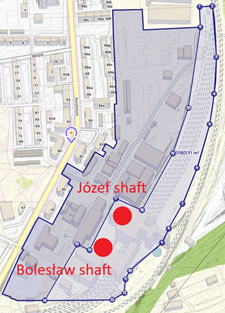
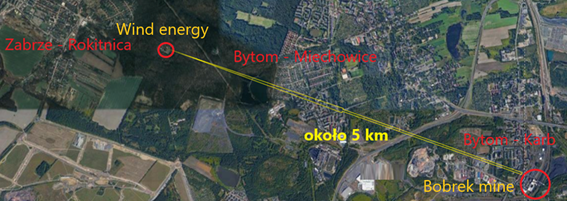
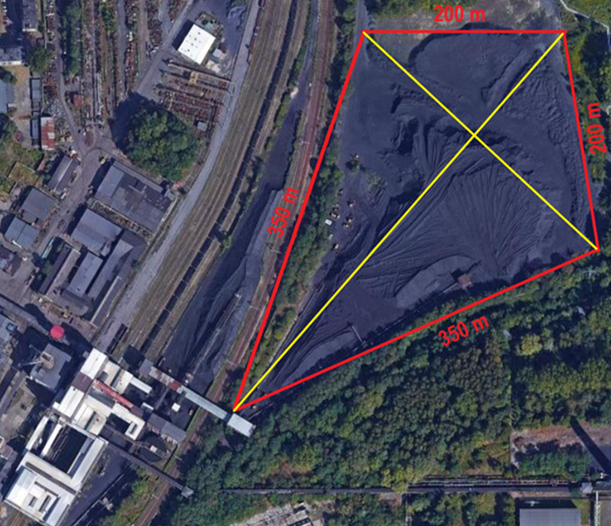
D6.1 Business plan of a Virtual Power Plant
The lessons relevant to the Project from this deliverable can be summarised as follows:
- Early integration of legal and administrative requirements (spatial plans, permits, environmental assessments) is crucial for efficient execution of energy projects on post-mining lands.
- Combining electricity (PV) and heat (geothermal) into a single integrated system allows for higher efficiency and operational independence.
- Post-mining infrastructure (shafts, galleries, technical spaces) can be effectively repurposed for heat recovery and energy distribution systems.
- Off-grid capability and integration with energy storage significantly improve system resilience and allow for strategic applications.
- Revitalized areas can serve as industrial support sites with defensive significance, especially when equipped with independent energy sources and underground facilities.
- The design of energy systems for eco-industrial parks should consider future expansion (e.g., wind components), source flexibility, and seasonal demand variability.
- The Virtual Power Plant project at the Bobrek mine site confirms the feasibility of effectively repurposing post-mining areas by integrating renewable energy sources with existing infrastructure. The system, combining geothermal, photovoltaics, and energy storage, is designed to meet up to 90% of the eco-park’s thermal and electrical needs. With off-grid operation potential and energy autonomy, the installation can also serve strategic functions, including defence support. This solution provides a scalable model for energy and industrial transformation in post-industrial regions.
6.2.- Business plan of a Green Hydrogen Plant
The business plan for the Green Hydrogen Plant outlines a comprehensive strategy to transform end-of-life underground coal mines into hubs for green hydrogen production, leveraging renewable energy and circular economy principles to drive sustainable regional development and job creation. The project is anchored in Asturias, Spain, and is designed to serve as a replicable model for other mining regions facing economic transition.
The vision is to repurpose former coal mining assets, particularly mine water and coal waste heaps, for the deployment of advanced electrolysis technology powered by renewable sources, primarily photovoltaics. The mission centres on maximising the economic and environmental value of these legacy sites by producing cost-effective, zero-emission hydrogen for the industrial and transportation sectors, especially local and regional bus fleets, which are targeted as early adopters due to the lack of existing green hydrogen infrastructure in Asturias.
The market analysis highlights the rapid global expansion of green hydrogen demand, with projections indicating exponential growth driven by decarbonisation targets and technological advancements. While only a small fraction of global hydrogen is currently green, ambitious European Union strategies and funding mechanisms, such as the European Hydrogen Bank and REPowerEU, are accelerating the transition.
Asturias presents a competitive landscape with several large-scale hydrogen initiatives underway, but the Mine-To-H2 project differentiates itself through early market entry, strategic partnerships, and the integration of circular economy practices. The project’s competitive advantages include the use of mine water for electrolysis, the transformation of coal waste heaps into solar farms, and the coupling of hydrogen production with existing geothermal district heating at Pozo Fondón, which enhances overall energy efficiency.
Operationally, the plant will begin with a 2.5 MW PEM electrolyser, scalable to 5 MW, and a 2.24 MW photovoltaic installation on the Pumardongo coal waste heap. Hydrogen will be stored at high pressure and distributed via a virtual hydroduct to a newly constructed hydrogen refuelling station (HRS) at the Oviedo bus terminal. This HRS will serve as both a commercial supply point for public transport fleets and a demonstration site for hydrogen mobility, supporting pilot projects with fuel cell buses and establishing a scalable model for regional adoption.
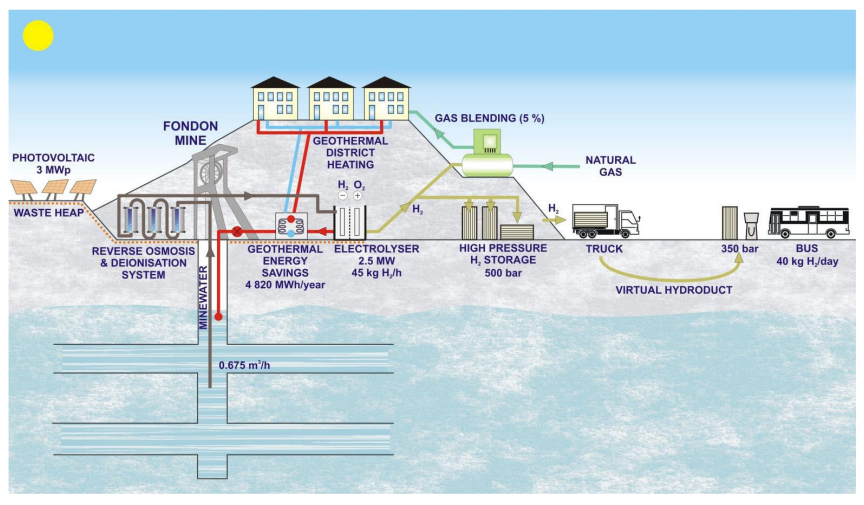

D6.2 Business plan of a Green Hydrogen Plant
The lessons relevant to the Project from this deliverable can be summarised as follows:
- One of the most significant lessons from the Mine-to-H2 project is the critical role of careful site selection and the creative repurposing of end-of-life coal mining assets. By leveraging existing infrastructure—such as mine water sources for electrolysis and coal waste heaps for photovoltaic installations—the project not only reduced capital expenditure but also accelerated the development timeline and minimised environmental impact.
- The adoption of a Special Purpose Vehicle (SPV) structure was instrumental in balancing risk, facilitating targeted financing, and ensuring regulatory compliance among diverse stakeholders, including mining companies, engineering firms, and equipment suppliers. This legal arrangement allowed for clear governance, flexible ownership, and efficient risk isolation, which are particularly important in complex, multi-partner projects.
- The project underscored the importance of forging strong partnerships across the value chain, including renewable energy developers, hydrogen refuelling station operators, industrial off-takers, and public authorities. Strategic alliances enabled the project to secure dedicated green electricity, expand distribution channels, and access technical expertise, all of which were crucial for scaling up operations and mitigating risks. Collaborative demonstration projects with industrial partners also facilitated the early adoption of green hydrogen in new applications, while participation in regional and European alliances helped align the project with broader policy and market trends.
- Government support, favourable policies, and proactive regulatory engagement were identified as key enablers for project viability and market adoption. The project benefited from alignment with EU strategies (such as REPowerEU and the European Hydrogen Bank), regional tax incentives, and evolving certification standards. However, navigating complex and fragmented permitting processes also revealed the need for early and continuous dialogue with regulators and policymakers.
- Integrating circular economy principles—such as using treated mine water for electrolysis, repurposing coal waste heaps for solar farms, and valorising oxygen by-products—was fundamental to the project’s environmental and economic sustainability. These actions not only minimized the ecological footprint but also created additional value streams and supported regional revitalization.
- Designing flexible, risk-sharing contracts with long-term offtakers was essential for mitigating market volatility and securing stable revenue streams. The project’s approach combined fixed-price, long-term contracts with value-based differentiation and indexation clauses, ensuring both price security for buyers and predictable income for producers.
